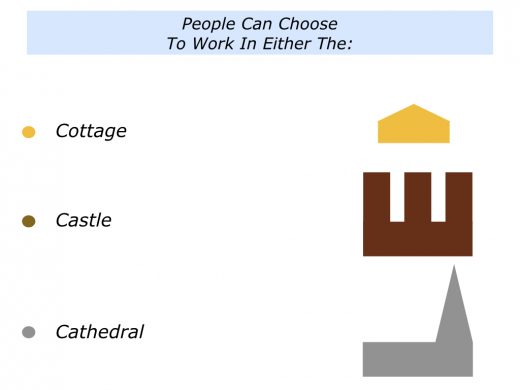
People can choose to work in three places during their lives: the cottage, the castle or the cathedral. Some try all three and then may return to the cottage. Let’s explore these places to work.
The Cottage
Creative people often start by working from the cottage. Because they have little money, they use their imagination to reach the market, provide great service and satisfy their customers.
Years later many entrepreneurs look back and recall the halcyon days when they felt in control of their growing business. Every decision counts and they see an immediate effect. Every day is an adventure and they must live off their wits.
Creative people attract attention, however, and one day they are visited by a messenger from the castle. This may be a larger organisation or the company headquarters. The messenger from the castle says something along the following lines to the creative person.
Your energy is just what we need to inject life into our organisation. Imagine what we can achieve with your creativity and our resources.
We can conquer the world. Can you come and help us to be successful?
The creative person turns down the offer, saying they want to remain independent. Two months pass, then another messenger arrives.
Higher in the chain of command, they wave a big cheque. They urge the creative person to reconsider and say something along the following lines.
We really need your creativity. Just think of the resources at your disposal.
Another refusal: but this is followed by another visit and a bigger cheque. Feeling it is worth giving it a go, the creative person finally accepts the offer to work in the castle.
(They may also have a back-up plan, however, which involves having an escape route.)
Looking back, can you think of a time when you worked in your equivalent of the cottage? You may have been working as a freelancer, in a small team, on a pioneering project or whatever. What did it feel like in that situation?
If you wish, try tackling the exercise on this theme. This invites you to do the following things.
Describe the specific time when you worked in your equivalent of the cottage.
Describe the specific things you did then when working in your equivalent of the cottage.
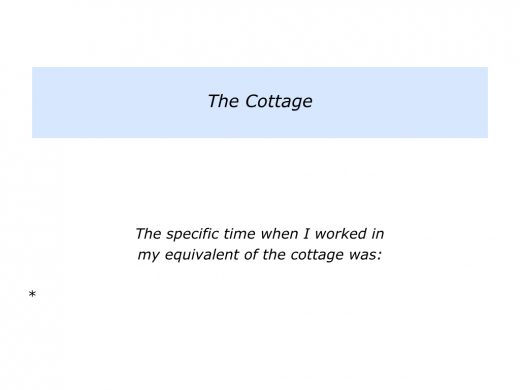
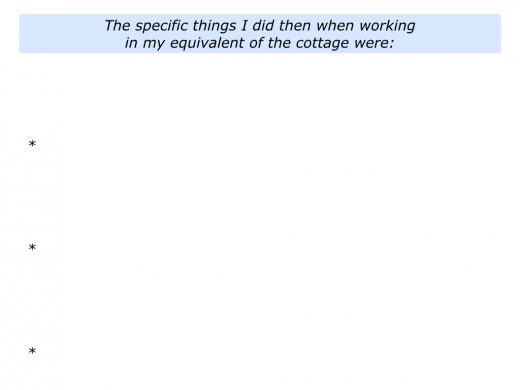
The Castle And
The Cathedral
The creative person is welcomed with open arms. It’s great to be lauded as a potential saviour. Time passes. They learn the ways of the castle, but things go slowly.
Two months after their arrival, the creative person feels impatient. Planning to get the show on the road, they aim to present their first imaginative idea at the next departmental meeting.
Politeness decrees they test it out with the person who invited them into the castle, so they run it past him in a one-to-one session. The person responds in the following way.
Great work, this is exactly why we brought you into the organisation.
Before implementing the idea, however, there are some key players you need to get on-side. They are busy people, but you can get into their diaries within the next 3 months.
Looking at your suggestion, I also believe a working party on the other side of the castle is studying something similar. You can get your voice heard by sitting on their committee.
As I said at the beginning, though, this is just the sort of energy we want you to bring to the organisation.
Kafka’s castle rules. After 2 years of following the rules of court, the person feels drained.
Some individuals stay on, hoping to one day reach the inner sanctum. Some join the castle’s process police and enforce decrees from the centre.
Some retire to their equivalent of the cathedral or Academia. They take time to study or write about the theory of success.
Looking back, can you think of a time when you worked in your equivalent of the castle or the cathedral? What did it feel like in that situation?
If you wish, try tackling the exercise on this theme. This invites you to do the following things.
Describe the specific time when you worked in your equivalent of the castle or the cathedral.
Describe the specific things you did then when working in your equivalent of the castle or the cathedral.
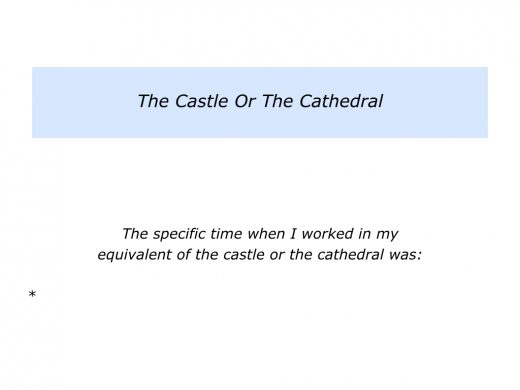
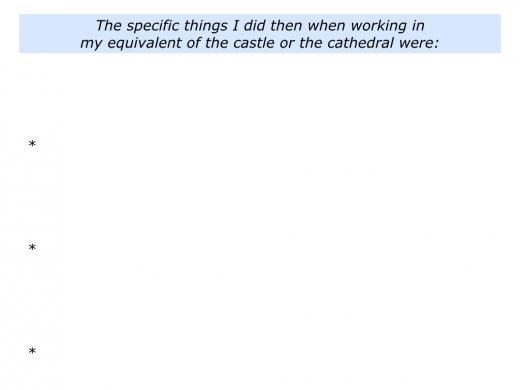
The Return
To The Cottage
Creative people often return to the cottage. Oxygen is vital. They return to running their own business or finding a stimulating project where they can breathe.
Decision-makers by nature, they want to feel in charge of their lives. Revisiting customers fires their imagination and energisers their brain. Regaining their zest for life, they help their customers to succeed.
Happy in their work, they get the right balance between innovation, implementation and impact. Life is good and they enjoy the country air.
Then one day a courier arrives from another castle. They say something along the following lines.
The dynamic company you have built fits perfectly with our strategy for becoming the world’s Number One.
The problem is that we do not have your kind of creativity in our business. How much would it cost for you to join us in the castle?
Some people accept the big cheque. Some accept a deal in principle, but find a way to retain their autonomy. They protect their culture by insisting on staying in the cottage and later getting a cheque for producing great results.
Some feel at home in the cottage where they have the freedom to continue doing creative work. Bearing this in mind, they politely give the following answer.
Thanks for your interest, but we are happy working in our own small company.
There are many ways to do fine work. People can choose to do this in their equivalent of the cottage, castle or cathedral.
Looking back, can you think of a time when you returned to your equivalent of the cottage? What did it feel like in that situation? What happened as a result?
If you wish, try tackling the exercise on this theme. This invites you to do the following things.
Describe the specific time when you returned to your equivalent of the cottage.
Describe the specific things you did then when returning to your equivalent of the cottage.
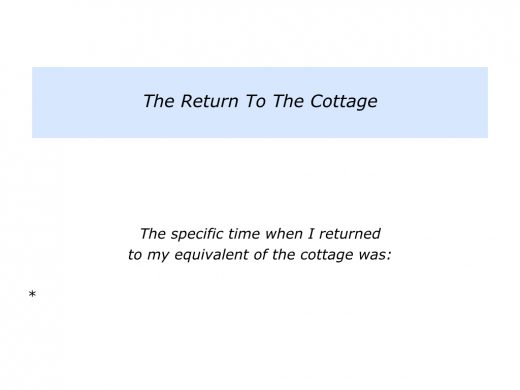
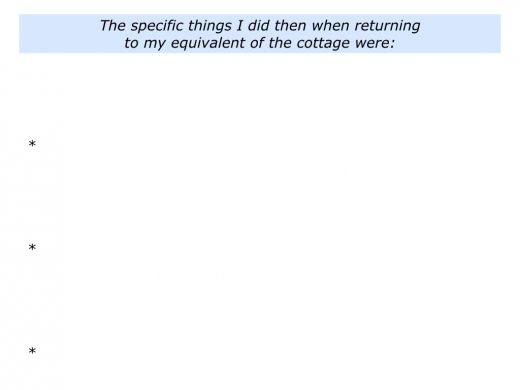






Leave a Reply